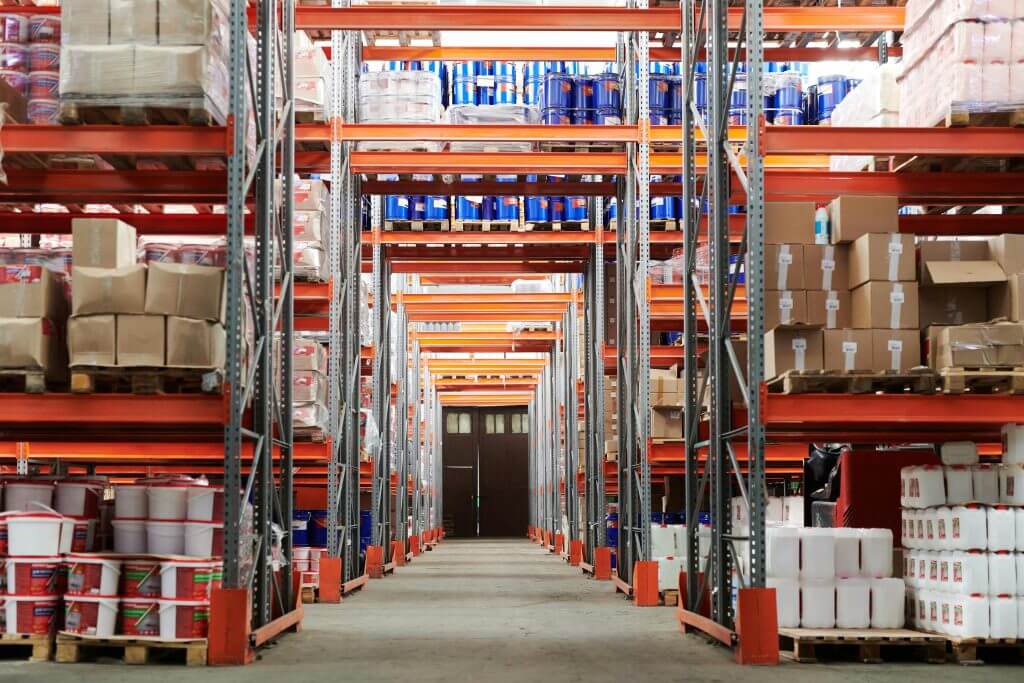5G and the Future: How Will Transform and Disrupt Industries

Table of Contents
Introduction
As we approach 2025, one of the most exciting and transformative technological advancements on the horizon is 5G technology. While 4G revolutionized our ability to access fast internet and connect with each other, 5G is set to take it even further — ushering in an entirely new era of connectivity. Unlike its predecessor, 4G, which primarily improved data speed and network reliability for consumer needs, 5G is designed to transform entire industries.
This fifth generation of wireless technology promises to deliver blazing-fast internet speeds, near-zero latency, and highly reliable connectivity, which will open up unprecedented opportunities for businesses and individuals alike. By enabling real-time data transfer, seamless communication, and enhanced network efficiency, 5G is positioned to support cutting-edge innovations that were previously impossible with older network infrastructures.
In this article, we’ll explore how 5G will revolutionize key industries such as healthcare, manufacturing, transportation, retail, and entertainment in 2025. As industries adopt 5G, they will experience significant shifts, from remote surgeries and autonomous vehicles to smart factories and enhanced shopping experiences. With ultra-fast data transfer, real-time processing, and vastly improved connectivity, 5G is expected to push the boundaries of digital transformation, not only improving existing systems but also enabling new business models and disruptive innovations. This is just the beginning of a new era in the world of technology and industry.
1. 5G in Healthcare

One of the most promising and transformative applications of 5G is in healthcare. With 5G’s low latency, high speed, and reliable connections, real-time data transfer will significantly enhance healthcare services and provide life-saving opportunities for patients. As healthcare becomes increasingly dependent on advanced technology, the integration of 5G will pave the way for more efficient treatments, better patient care, and new capabilities that were once considered impossible.
Telemedicine and Remote Surgeries
In 2025, the combination of 5G and robotic surgery will drastically change how surgeries are performed. Surgeons will be able to conduct remote surgeries, controlling robotic systems with 5G-powered precision, enabling them to operate on patients in distant locations with minimal delays. The high-speed internet connection provided by 5G will allow for real-time transmission of crucial surgical data, which is essential for successful operations. This technological leap will save lives, especially in remote or underserved areas where access to experienced surgeons or medical facilities is limited. Surgeons will no longer be restricted by geographical barriers, allowing them to perform surgeries from anywhere in the world.
Health Monitoring and Real-time Data
Another significant benefit of 5G in healthcare will be in health monitoring. With the power of 5G, wearables and medical devices will be able to transmit real-time health data—such as heart rate, oxygen levels, and blood pressure—to healthcare providers instantly. These advancements will allow doctors to monitor patients’ conditions continuously, even if they are miles away, providing immediate response to critical changes in a patient’s health status. 5G connectivity will ensure that medical data is transferred seamlessly and quickly, allowing doctors to make fast, informed decisions. This will revolutionize personalized and proactive care, as doctors will be able to track and respond to patients’ health data in real time, avoiding potential health complications before they occur.
Furthermore, 5G-enabled medical devices will be able to perform remote diagnostics and provide instant consultations, enabling faster diagnosis and treatment plans for patients. This integration of technology into healthcare will not only improve patient outcomes but also reduce healthcare costs by optimizing the efficiency of medical teams and reducing unnecessary hospital visits.
Sources:
- Telemedicine and 5G: Transforming Healthcare
- How 5G Can Revolutionize Healthcare
- Impact of 5G on Healthcare Industry
2. 5G in Manufacturing

The manufacturing sector stands to gain immensely from the power of 5G technology. As industries continue to embrace the concept of smart factories and industry 4.0, 5G will be the driving force behind this transformation. With real-time data collection, improved machine-to-machine communication, and increased automation, 5G will help companies become more efficient, cost-effective, and flexible, paving the way for future innovations.
Smart Factories and Automation
One of the biggest advantages of 5G in manufacturing will be the ability to create truly smart factories. With 5G’s low latency and high-speed connectivity, manufacturing equipment can be remotely controlled and monitored in real-time. This connectivity will enable predictive maintenance, which means potential issues with machinery can be detected before they cause downtime, ultimately improving efficiency and reducing repair costs.
Additionally, with real-time monitoring, production lines can be optimized based on data-driven insights, which will allow manufacturers to adjust in real-time to fluctuations in demand or supply chain changes. This level of flexibility is something that previous technologies could not support, but 5G will allow it to happen seamlessly, enabling manufacturers to maintain consistent quality while improving output.
Supply Chain and Logistics
5G will also transform supply chain management. Manufacturers will be able to track shipments in real-time, monitor the status of inventory, and manage operations more effectively. With instantaneous data transfer, logistics operations can be synchronized with precision, reducing delays and improving overall efficiency. For instance, smart warehouses equipped with 5G can automatically update inventory levels, triggering new orders when stock is low, ensuring a continuous flow of goods and avoiding bottlenecks in the supply chain.
The impact of 5G on logistics doesn’t stop at tracking shipments. Real-time location data will allow manufacturers to optimize delivery routes, saving both time and money. Automated vehicles and drones will be able to receive real-time instructions through 5G, allowing for more efficient deliveries and reducing human error.
Sources:
- 5G in Manufacturing: A Revolution in Industry 4.0
- How 5G is Transforming Manufacturing
- Impact of 5G on Manufacturing Sector
3. 5G in Transportation

The transportation industry is on the cusp of a major transformation, thanks to the power of 5G technology. With faster, more reliable connectivity, 5G will make transportation systems smarter, safer, and more efficient. By enabling real-time communication between vehicles and infrastructure, 5G will not only enhance traffic flow but also drive innovations in autonomous vehicles and smart cities.
Autonomous Vehicles
One of the most exciting applications of 5G in transportation is its role in autonomous vehicles. Self-driving cars will depend on real-time data transmission to communicate with other vehicles, traffic lights, road sensors, and cloud-based systems. 5G’s low latency ensures that autonomous vehicles can make split-second decisions based on live updates, improving road safety and reducing the likelihood of accidents.
In 2025, autonomous vehicles will be able to interact with each other seamlessly, anticipating road conditions and making real-time adjustments to speed, direction, and safety protocols. This will create a safer driving environment by allowing for precise navigation and ensuring that vehicles respond to traffic patterns and road conditions instantaneously.
Smart Cities and Traffic Management
5G will also power the development of smart cities by enabling real-time communication between transportation infrastructure and traffic management systems. Traffic lights, for instance, will be able to adjust in response to traffic volume, reducing congestion and delays. Public transportation systems will be able to track real-time data, optimizing routes and reducing wait times for passengers.
Moreover, 5G-enabled traffic systems will help cities manage emergency response times by prioritizing ambulances and emergency vehicles in congested areas. Smart parking systems, integrated with 5G, will allow drivers to find available spots more easily, reducing search times and traffic congestion in urban areas.
Sources:
- How 5G Will Impact Autonomous Vehicles
- 5G’s Role in Autonomous Vehicle Revolution
- 5G and Smart Cities: A Future Vision
4. 5G in Retail and E-commerce

5G will have a transformative impact on the retail industry. With the ability to transmit data at lightning speeds and low latency, retailers will be able to offer a more personalized, interactive, and immersive experience for consumers. As e-commerce grows, the need for seamless shopping experiences and real-time interaction with customers will become more crucial, and 5G will be at the heart of these changes.
Improved Customer Experience
One of the most immediate benefits of 5G in retail is the improvement in customer experience. Retailers can leverage 5G’s speed to provide instant access to product information, pricing updates, and live inventory tracking. Customers will be able to interact with products in real-time through their mobile devices, checking stock levels, comparing prices, and even making purchases instantly while in-store or online.
Augmented Reality and Virtual Shopping
In 2025, the combination of 5G and Augmented Reality (AR) will transform how customers shop. With AR-powered shopping experiences, consumers can use their smartphones or smart glasses to virtually try on clothes, visualize furniture in their homes, or even test products before purchasing them. 5G’s low latency will make these experiences smooth and real-time, offering immersive shopping without delays.
Moreover, virtual stores powered by 5G will allow customers to explore immersive digital environments where they can shop as if they were physically in a store, regardless of their location. Retailers will also be able to personalize the shopping journey by offering real-time promotions and customized recommendations based on customer preferences.
Sources:
- 5G in Retail: Changing the Shopping Experience
- 5G and Augmented Reality in Retail
- 5G and the Future of Shopping
5. 5G in Entertainment

The entertainment industry will see massive shifts with the widespread adoption of 5G technology. From gaming and streaming to immersive experiences like virtual reality (VR) and augmented reality (AR), 5G is expected to enhance the way we consume content. The high-speed, low-latency nature of 5G will revolutionize how consumers engage with entertainment on digital platforms, creating seamless and immersive experiences.
Enhanced Streaming and Gaming Experiences
With 5G’s high-speed internet and low latency, streaming services will be able to provide buffer-free 4K and 8K video content. Consumers will experience faster load times, crystal-clear quality, and uninterrupted streaming, even in the highest definition. This will be particularly beneficial for live streaming events, such as sports and concerts, where real-time viewing is crucial for fan engagement.
Additionally, online gaming will be transformed by 5G. Gamers will experience lag-free multiplayer gaming with real-time interaction and super-fast downloads. 5G’s high speeds will support cloud gaming, where players don’t need powerful consoles; instead, they can stream games directly to their devices.
Virtual and Augmented Reality Entertainment
5G will be the backbone of the next wave of immersive entertainment, enabling technologies like virtual reality (VR) and augmented reality (AR) to reach their full potential. VR gaming and entertainment experiences will become even more immersive with low latency, real-time interactions, and realistic graphics, allowing users to feel truly “present” in virtual worlds.
For example, VR concerts will become a reality, where fans can experience live performances in real-time from anywhere in the world, creating a new form of interactive entertainment. Similarly, AR experiences will allow users to overlay virtual objects onto the real world, enabling new forms of interaction in gaming, shopping, and even social media.
Sources:
- How 5G Will Transform Streaming and Gaming
- 5G and the Future of Entertainment
- Impact of 5G on Virtual Reality
6. Challenges and Roadblocks

While the potential of 5G technology is incredibly exciting, there are several challenges and roadblocks that need to be overcome before it can be fully implemented worldwide. From infrastructure requirements to security concerns, 5G adoption will face significant hurdles. However, with proper investment and planning, these obstacles can be addressed to ensure 5G’s successful integration into industries and daily life.
Infrastructure Challenges
One of the major hurdles in rolling out 5G globally is the need for a completely new infrastructure. Unlike 4G, 5G requires millions of small cell towers, fiber optic cables, and advanced antennas to achieve its full potential. These towers must be placed in urban, suburban, and rural areas to create seamless connectivity. This is a huge financial and logistical challenge, particularly in rural regions where infrastructure development is more expensive and complex.
Additionally, the high frequency used by 5G requires shorter distances between antennas, leading to a higher density of small cell towers. The cost of building and maintaining these facilities could delay 5G’s widespread rollout in some areas.
Security and Privacy Concerns
As with any new technology, 5G comes with significant security and privacy concerns. The increased number of connected devices in a 5G-enabled world creates more vulnerabilities for cyberattacks. 5G networks will be handling massive amounts of data, including personal information, making them attractive targets for cybercriminals. Ensuring data protection, network security, and privacy will be a top priority as the global 5G network is deployed.
Additionally, the introduction of 5G-enabled smart devices means that more data will be collected and shared, raising concerns about data privacy and potential surveillance. The implementation of strong encryption and secure network protocols will be essential to mitigate these risks.
Global Disparities in 5G Access
While some countries are racing ahead with 5G deployments, others are struggling to catch up. The global disparity in 5G access is significant, with some nations already offering full 5G coverage and others still in the early stages of development. Developing countries, in particular, face challenges like cost barriers, limited infrastructure, and lack of investment.
As a result, 5G adoption may not be uniform worldwide, creating a digital divide between countries that can afford 5G technology and those that cannot. This gap could limit the global economic benefits of 5G, slowing down digital transformation in regions that lack access to the technology.
Sources:
Conclusion
In 2025, 5G technology will be at the forefront of global digital transformation, impacting industries such as healthcare, manufacturing, transportation, retail, and entertainment. The speed, low latency, and reliable connectivity that 5G provides will enable groundbreaking innovations, including remote surgeries, autonomous vehicles, and smart cities. It’s clear that 5G will not just improve how we use technology—it will revolutionize the way industries operate, enhancing efficiency, safety, and consumer experiences.
However, the path to full 5G adoption is not without challenges. Infrastructure investments, security risks, and global disparities in access could slow down the process. Despite these hurdles, the potential benefits of 5G far outweigh the obstacles. As governments, businesses, and telecommunication providers continue to push for widespread adoption, the world will experience a new future of connectivity that unlocks the full potential of digital technology.
In the coming years, 5G will be the backbone of the next industrial revolution, changing the way we live, work, and interact. The future is incredibly exciting, and 5G will be the key to unlocking a more connected, efficient, and innovative world.






2 Comments